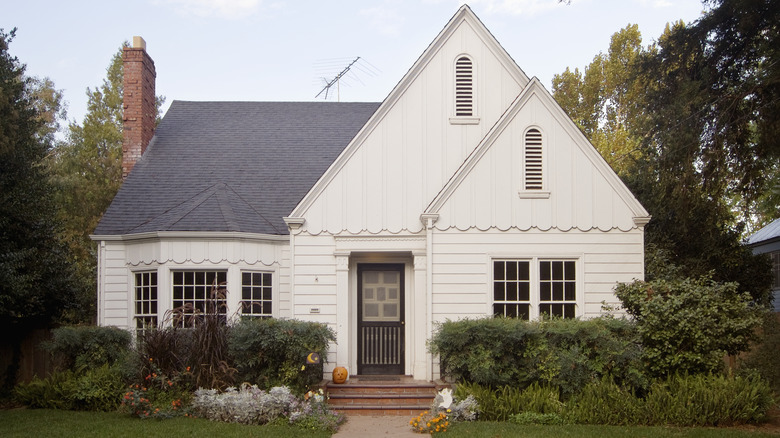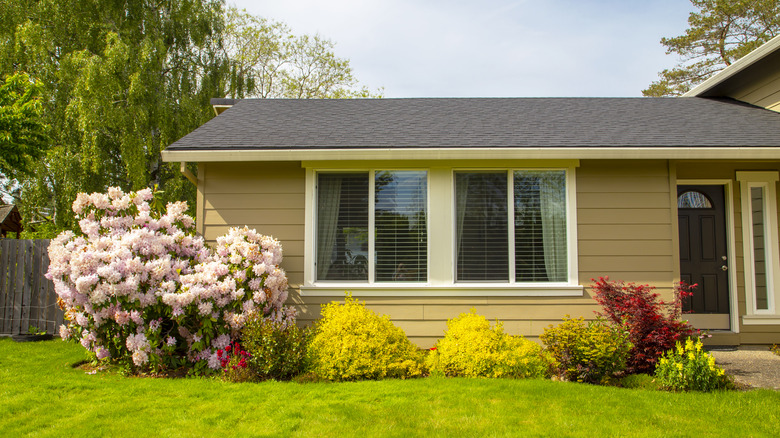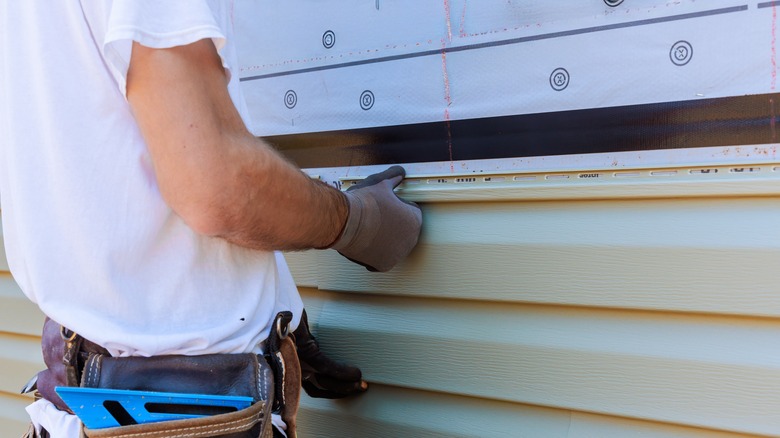Home Exterior Mistakes To Avoid According To HGTV's Mike Holmes' Trusted Inspector
It's always satisfying working on the exterior of your house and boosting your curb appeal with your own effort and know-how. However, unless you're an experienced contractor or inspector, chances are you don't know every mistake and pitfall when it comes to sprucing up your home. After all, you don't know what you don't know, but walking into a DIY blunder can end up costing you more money than you save in the long-run. Luckily, HGTV's Mike Holmes' trusted inspector, Paul Bonenfant, shared a rundown of everything that can go wrong on the exterior of a spruced-up house. And some of his call-outs might shock you.
Planting your landscaping too close to the house, allowing the mulch to touch your exterior walls, and installing your siding too close to the ground are some missteps that aren't common knowledge. However, if they go on without being fixed, they can lead to some pretty sizable damage, whether that's branches damaging the exterior or the ground-level siding rotting. Here is a closer look at what Bonenfant wants you to avoid.
Planting landscaping too close to the house
Adding beautiful landscaping around your house is one of the easiest ways to add curb appeal. Perfectly styled bushes, frothy ornamental grasses, and blooming annuals all work together to make your home look curated and memorable. However, if you're new to the planting game, then you might not know that you should avoid planting them too close to the wall. Small shrubs and landscaping should be planted a minimum of 2 feet from the house, whereas tall items should be at least 5 feet away. The reason for this is many-fold. The first is that they will eventually grow and the branches will damage the exterior walls, which is exactly what Bonenfant found during his quick inspection. "We have plants and shrubs too close to the house. You have to cut that back 12 inches minimum," he said on Instagram. This will allow just enough clearance. In addition to branches scraping the wall, plants also get watered and collect moisture — and the last thing you want is constant moisture on your walls. That's just inviting eventual rot.
The same sentiment goes for mulch. "We have some mulch too close to the brick. We need some space there," he noted. While his reasoning was that the small woodchips can eventually move and plug up the weep holes, there's another reason you don't want to spread mulch right next to your house. It retains moisture, and it can eventually deteriorate the wall it touches, inviting pests to enter your home. Instead, use landscaping rocks as a barrier between your home and the mulch, with a clearance of 4 inches.
Installing siding too low to the ground
If you updated your own siding, there is a common mistake you can make, and that is installing it too low to the ground. In fact, that's one of the errors Bonenfant found during his rapid-fire inspection. "We got the exterior grade too close to the vinyl siding. We can get some rotting in there. You want it at least 6 inches from the ground," he said on Instagram. In the clip, the siding was almost flush with the grass. However, it should be at least 6 to 8 inches above the ground. What you should see in that space instead is your concrete foundation, since that won't rot or attract pests like termites.
Keep in mind, though, that different types of siding will require different types of clearance. While vinyl needs a minimum of 6 inches, wood siding will need much more since it's even more susceptible to water damage. That should hover a minimum of 8 inches from the ground. However, siding isn't the only thing that needs a foundation clearance. Brick and stucco also need to be a minimum of 6 inches from the ground.


